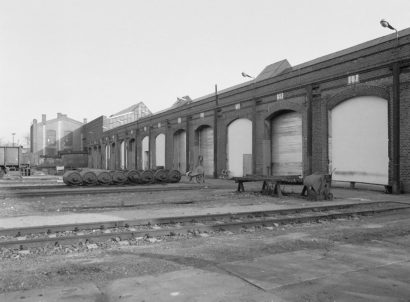Dresden (Railway Repair Works) Subcamp
September 15, 1944 – February 19, 1945
![]()
Railway halls of the former Repair Works Dresden, 1992 (Deutsche Fotothek Dresden / Photo: S. Bregulla)
![]()
Aerial photo of the Dresden-Friedrichstadt Train Station, 2019 (Flossenbürg Concentration Camp Memorial / Photo: Rainer Viertlböck).
-
Prisoners
The first transport was 300 prisoners who were arrested in the wake of the Warsaw uprising. On a second transport, 300 prisoners arrived from Groß-Rosen, mainly Polish and Russians, along with a few Czechs, Lithuanians, Germans, French, and Croatians. In November 1944, 597 prisoners were registered.
-
Forced labor and quarters
Repairing damaged wagons for the National Railways Repair Works (RAW) on Weißeritz-Ufer (today Emmerich-Ambros-Ufer). The prisoners were most likely quartered in an unheated locomotive hall. The men of both transports worked separately in day and night shifts.
-
Guards
Between 25 and 32 SS men (including Hungarian Germans and Ukrainians). Detail leader Rudolf Becher was responsible for the violent treatment of prisoners.
-
Death toll
At least 80 deaths; at least eight prisoners were shot while trying to escape. During the air raids of February 13, 1945, 51 people died.
-
Disbanding of the camp / end of the war
On February 19, 1945, the prisoners who had survived the air raids on Dresden were transferred back to Flossenbürg main camp. Many of them died there shortly afterward. The remaining prisoners were sent to different subcamps or camps set aside for the dying.
-
At least 14 of the prisoners return to the subcamp Railway Repair Works in Dresden in March.
-
Commemoration
A memorial stone is located in front of one of the former Repair Works buildings on today’s Emmerich-Ambros-Ufer.

